How to overcome the issue of underutilized SaaS licenses




Take a self-guided tour of the platform.
See why Vertice is trusted by top procurement leaders.



As businesses race to secure the all-important competitive edge, SaaS adoption has surged. Statista reports that the average organization now subscribes to as many as 130 different tools to streamline business efforts, whether through improvements to operational efficiency, access to deeper insights into their target market, or one of the countless other industry-specific advantages of leveraging these software applications.The problem is, as software stacks have undergone exponential growth, so has the risk of these tools becoming underutilized, resulting in wasted SaaS spend, as well as both security and productivity implications.But how exactly do you identify instances of underutilized SaaS? And how to you manage and overcome the problem?To address this, we've explained what it refers to, examined the causes and implications it carries for organizations, and shared some failsafe strategies for prevention.,
What is SaaS license underutilization?
SaaS license utilization refers to the efficient adoption and implementation of cloud-based software tools, and is often expressed as a percentage of the total software procurement across the organization.High levels of SaaS utilization reflect a software portfolio that is adopted widely and actively leveraged to achieve business objectives, maximizing the return on investment associated with each subscription.
What causes SaaS licenses to go underutilized?
When a workforce isn’t leveraging software to its full potential, it is known as SaaS underutilization. While the scope and implementation of these tools will vary from organization to organization, there is a set of common issues that can cause these licenses to go underutilized.These are some of the top offenders:
Redundant apps
One of the main reasons why SaaS licenses go unused is because of redundant software applications. In other words, the existence of two or more tools that have overlapping features.This often occurs when two different departments need to use a similar type of software, for instance an email marketing platform. As an example, the marketing team may have a subscription to Marketo, while the customer support team may be sending out customer emails through MailChimp.Occasionally, however, feature overlap will happen within the same department. This could be a result of employees being given the freedom to make use of their preferred software, for example one member of the team could procure a subscription to a digital design tool such as Figma, while another macOS user makes use of Sketch. Alternatively, it could be the result of a forgotten application auto-renewing each year.Regardless of the cause, instances of redundant software will often lead to licenses remaining underutilized or abandoned entirely by the intended users., Instances of redundant software will often lead to licenses remaining underutilized or abandoned entirely by the intended users.,
Duplicate software
Another common cause of SaaS underutilization is duplicate software.This situation arises when an organization inadvertently procures multiple licenses for the same tool, usually due to a lack of centralized procurement or miscommunication between departments.One of the more common types of software that is purchased by multiple departments is project collaboration software. In fact, without a centralized procurement process, it's entirely possible that two or more teams, for example development, product and marketing, may all be separately subscribing to the likes of Jira.
Lack of training
Another contributing factor is the insufficient training of employees in using SaaS applications. When employees are not proficient in utilizing certain tools, they are less likely to harness their full potential, leading to underutilization.In these cases, underutilized SaaS may signal a need for training or additional support when using certain tools, with a view to raising competence and encouraging users to leverage procured tools as intended.
Overprovisioning of licenses
Overprovisioning occurs when an organization subscribes to a higher subscription tier than necessary, often as a precaution against unforeseen growth. While this might appear prudent, it ties up resources that could be allocated elsewhere, contributing to SaaS license underutilization.To learn more about smart software purchasing, we spoke to Vertice’s very own Head of Purchasing, Nick Riley. Here’s what he had to say:, ,
Shadow IT
Employees adopting tools that have not been sanctioned for use by the IT department can lead to the proliferation of unused SaaS licenses.When staff members opt to use their own tools rather than those that have been centrally procured, they’re likely to leave the actual tools intended for these tasks underutilized.One type of tool in particular that we anticipate becoming a major culprit of shadow IT is AI software.With the share of SaaS spending for these tools having shot up by 500% in the first three months of 2023 alone, it's clear that organizations have been desperate to test out the benefits of AI. The problem is, as software giants such as Salesforce, Adobe and HubSpot rapidly integrate AI functionality into their suite of tools, we're likely to see increased instances of feature overlap and therefore underutilized licenses.
Forgotten licenses
Lastly, forgotten licenses are those that silently auto-renew without active use or monitoring. Our data shows that as many as 89% of vendors include auto-renewal clauses in their contracts, and organizations may continue to pay for these licenses year after year, unaware of the wastage.This is particularly common when tools are purchased outside of central channels — otherwise known as maverick spending.,
The impact of underutilized software
Underutilized SaaS licenses can have wide-reaching implications for your organization’s finances, security and general productivity.But while the exact levels of underutilization will vary depending on the type of SaaS product, our purchasing insights data indicates that average underutilization across the SaaS portfolio sits at an alarming 33%.,
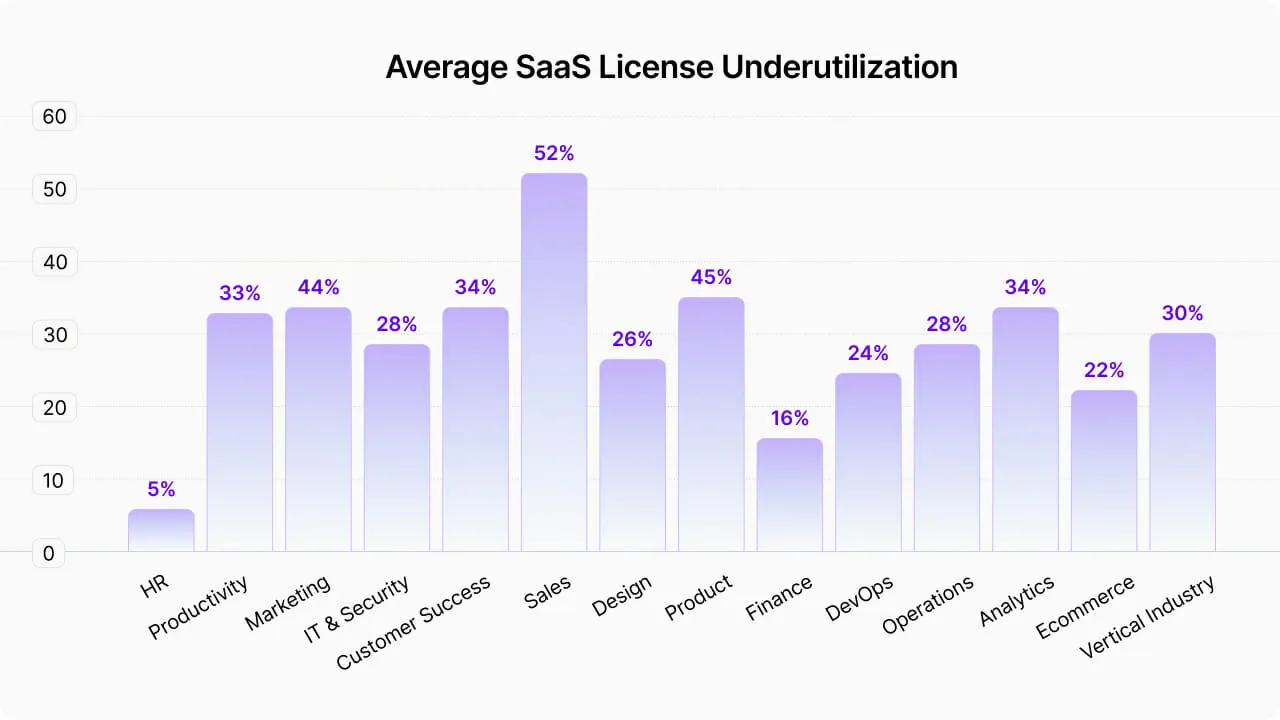
, So, how could this be affecting your organization?
Financial losses
Firstly, underutilized SaaS licenses put a strain on a company's financial resources. The expenses you commit to SaaS represent a substantial portion of your total organizational spend – around 14% on average – and with so many licenses going unused, that's a huge hit on your finances.In fact, our data indicates that companies with between 100 and 400 employees are wasting around $500,000 on SaaS every year. In contrast, those with a headcount of more than 2,000 are wasting an average of $4.5 million.,
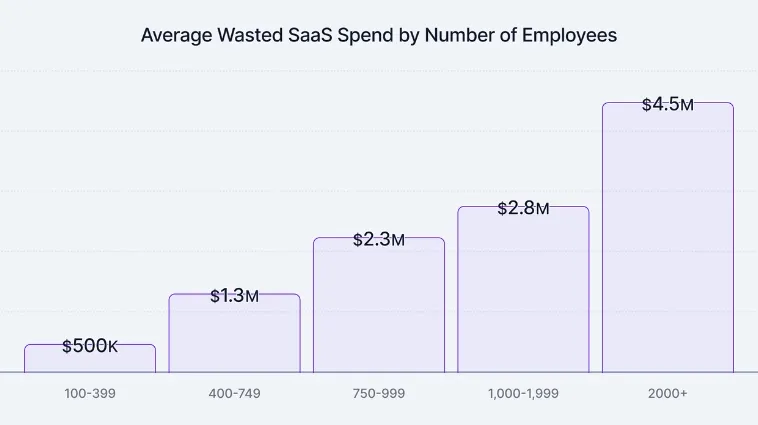
,
Procurement issues
IT leaders must also justify these expenses to upper management and shareholders, which becomes increasingly challenging as underutilization persists. All in, this makes it difficult to allocate budgets effectively, as resources are tied up in contracts that offer little business value and could be diverted to more critical areas for investment.
Security issues
Underutilized licenses can pose significant security risks. When these tools slip out of regular use, they quickly become outdated and may not receive critical security updates, leaving vulnerabilities that malicious actors can exploit.Additionally, any unvetted applications that are utilized in place of approved tools may not adhere to the organization's security standards. This increases the potential for data breaches or compliance violations which can prove costly for both finances and security.
Productivity decline
Underutilization also leads to operational inefficiencies. When employees cannot access the tools they need due to license shortages, or they are using redundant applications, productivity suffers. This can impact project timelines and overall business performance.Organizations that underutilize SaaS licenses may encounter difficulties in onboarding new employees or adapting to changing business needs due to resource constraints caused by underutilization., , , ,
SaaS license optimization strategies
SaaS underutilization can be costly for your organization, but there are ways to prevent and mitigate its effects. These are our top recommendations.
1. Analyze usage data
One effective way for businesses to optimize their SaaS licenses is by analyzing software usage data. By leveraging discovery tools and real-time analytics, you can see how employees across the organization are utilizing the software at their disposal and identify underutilized licenses.By scrutinizing metrics such as user login frequency and active users, it’s possible to pinpoint which licenses are actively used and which might be surplus to requirement. For instance, you may discover that a high-tier subscription with advanced features is unnecessary for most users, and a lower-tier subscription would suffice. This data-driven approach empowers companies to make informed decisions about optimizing their SaaS licenses, reducing expenses without compromising productivity.
2. Audit your software portfolio
Regularly auditing a portfolio of SaaS licenses is another key strategy for optimization — and one that is best implemented once you have clear visibility of all software usage within the organization. This is typically performed as part of an application rationalization process to review all active licenses, their terms, and associated costs.A comprehensive audit helps identify redundant or overlapping software solutions that can be consolidated or eliminated. Then, you’re free to negotiate better terms with vendors or seek volume discounts based on actual usage. An audit also ensures compliance with licensing agreements, reducing the risk of unexpected penalties or legal issues.
3. Streamline your SaaS management
To optimize SaaS license utilization, organizations should streamline their software management. SaaS management platforms centralize the governance of licenses and user access through one unified platform, reducing the administrative burden of identifying, cataloging, and regularly updating a SaaS database.This approach allows you to monitor usage on an ongoing basis and ensure that licenses are allocated appropriately. Plus, you achieve better visibility into spending, simplifying budget planning and ensuring that software investments align with business goals.,
Optimize SaaS license utilization with Vertice
Monitoring and optimizing SaaS license utilization could pay dividends for your ROI, security and productivity — but there’s no denying that it’s an arduous process. This is where Vertice can help.Using our SaaS management platform, you can access one-stop visibility into your entire portfolio, helping identify any instances of underutilization or cost-saving opportunities that have gone overlooked.See for yourself how Vertice helped one company optimize its software spend, saving it more than $100,000 in just three months. Alternatively, find out how much you could be saving with a free cost-savings audit.,
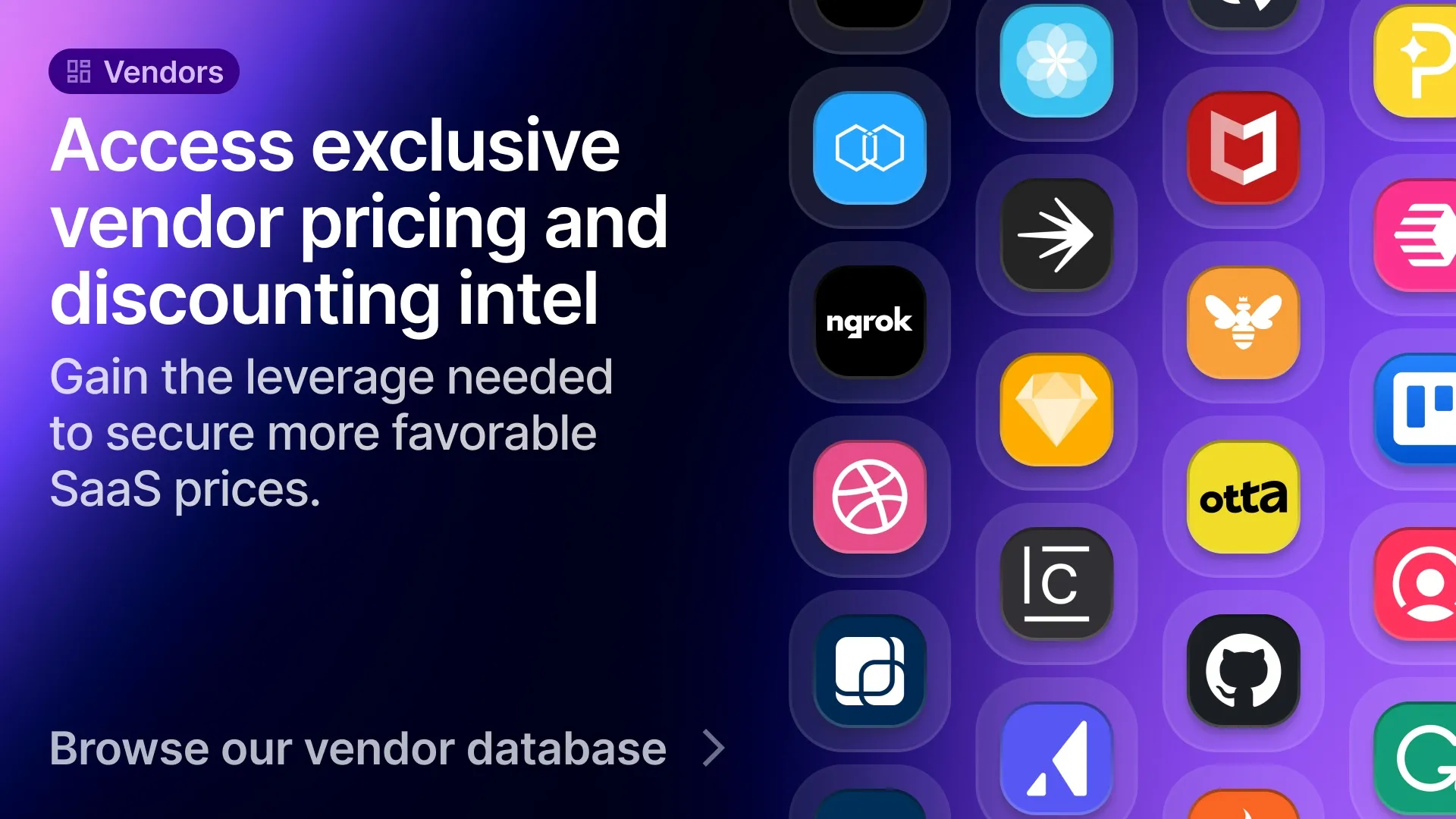
, , , , , , , , , , , , , , , , , , , , , , , , , , , , , , ,
.webp)


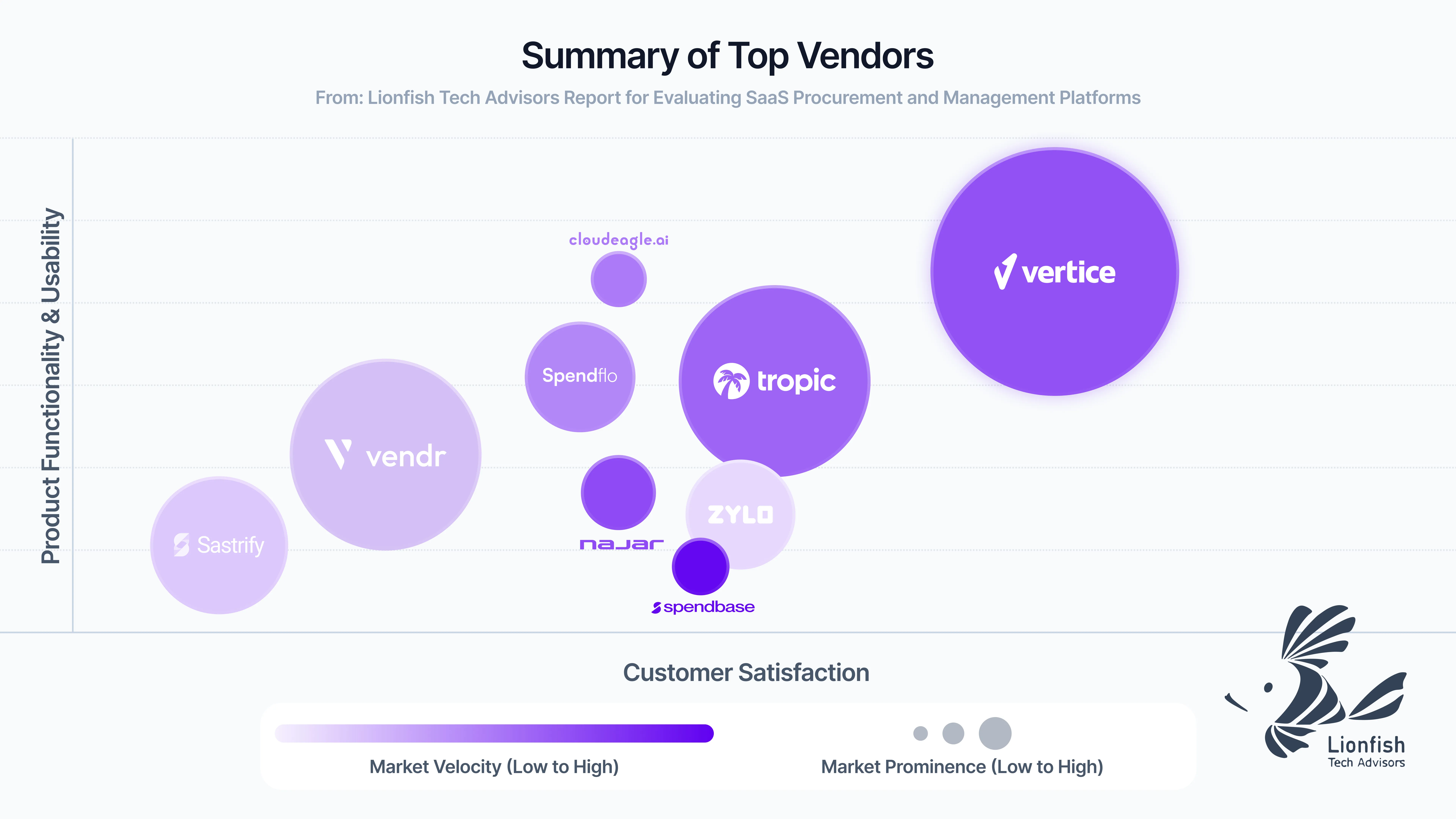



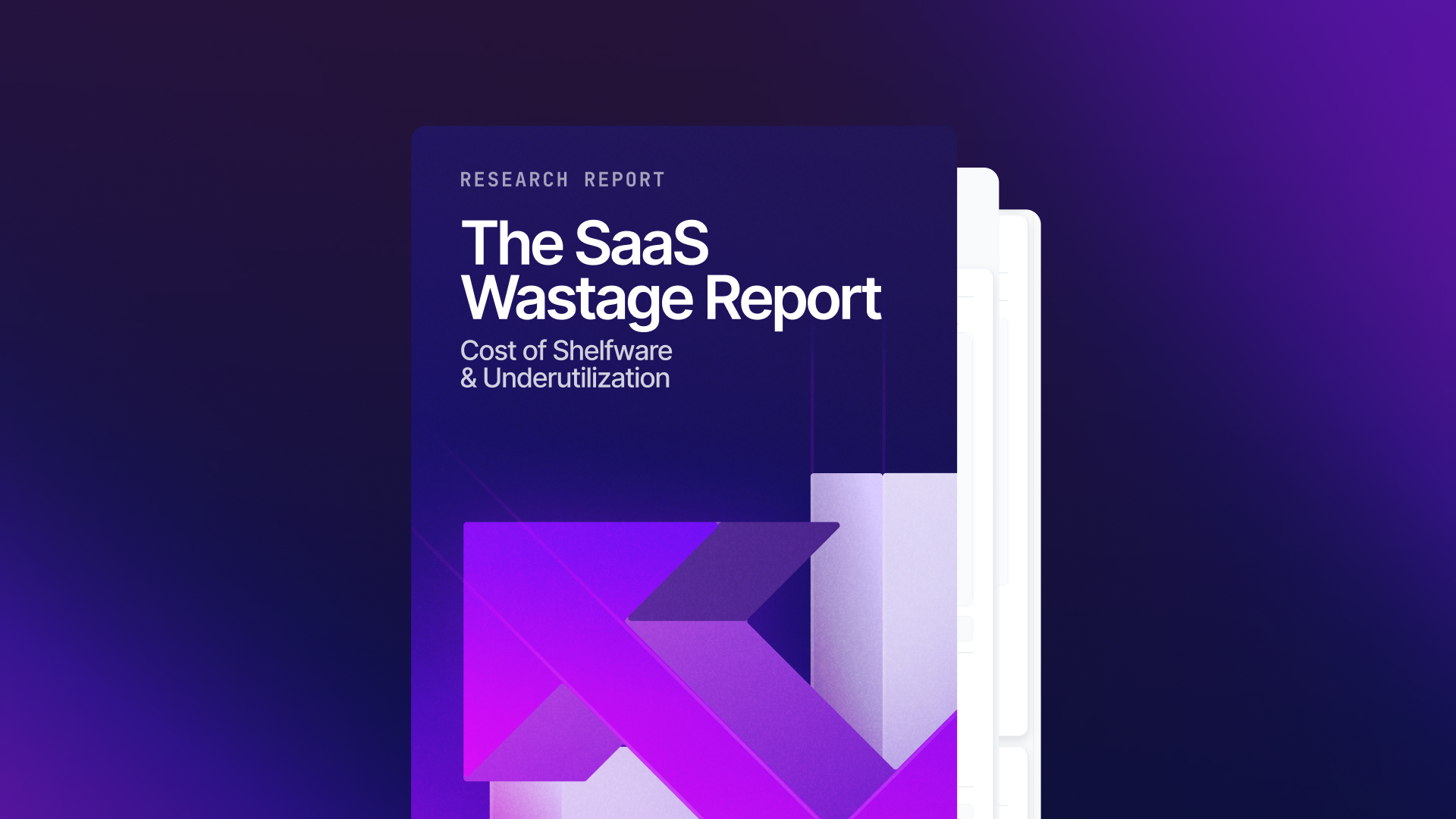



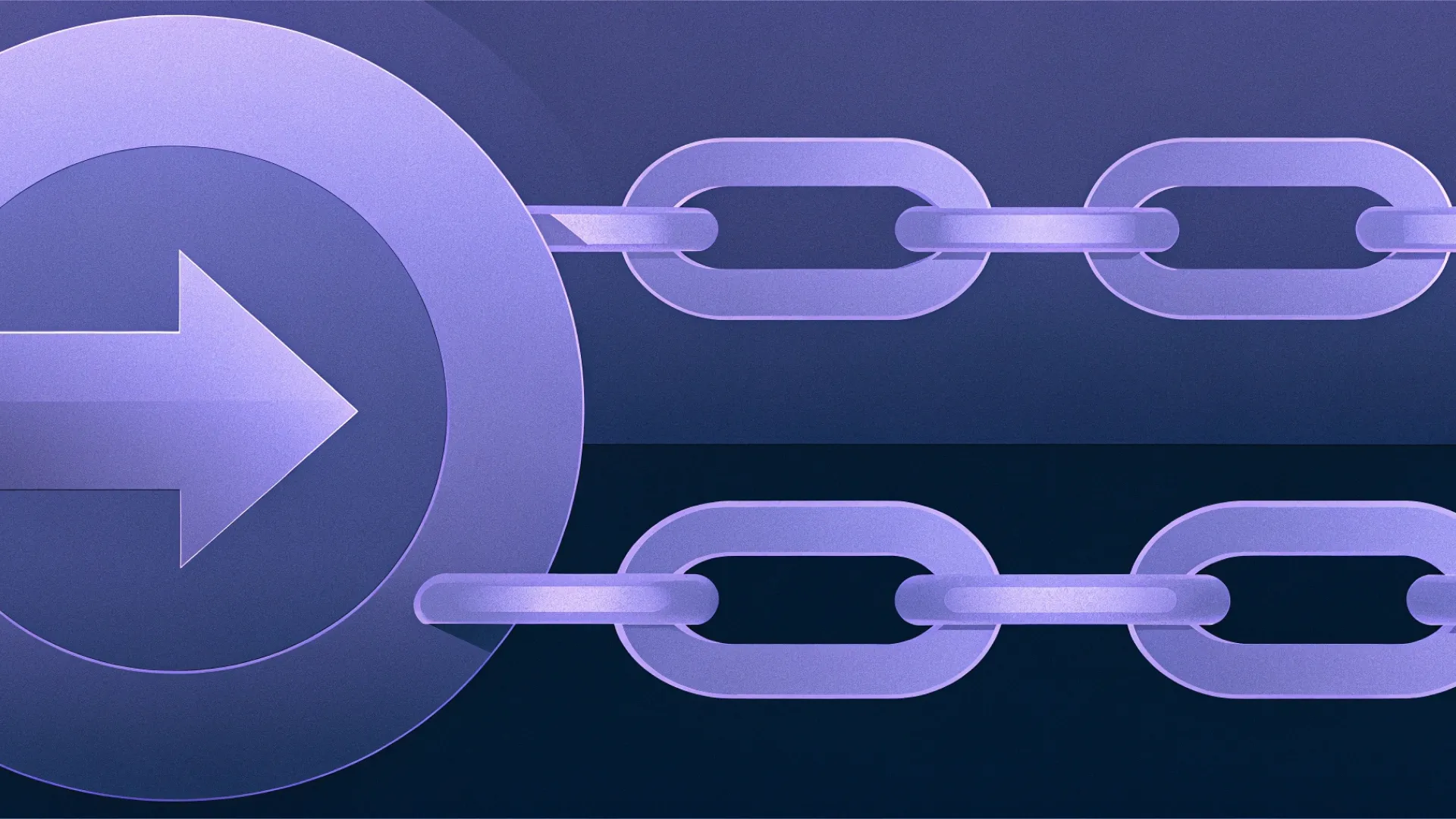
.webp)



